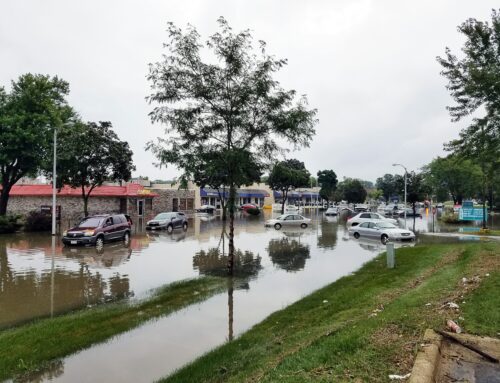The nation is about to find out – again – that our federal disaster policies are failing taxpayers and the people impacted by disaster. Assistance that flows relatively easily and doesn’t incentivize planning ahead for disasters. Too much costly response and too little relatively cheaper mitigation. A flood insurance system that fails to serve most Americans. And disaster aid that fails to “pre-spond” to the inevitable future disasters by rebuilding smarter and more resilient.
The risk modeling team at reinsurer Aon Benfield puts the likely price tag for the recent “1 in 1000 year” flood in South Carolina at more than $2 billion. The company also points out this was the sixth 1 in 1000 year flood in the last decade. That’s of course because the “1 in X year event” moniker is misleading and should be retired. It’s really an expression of the percentage likelihood of something occurring. A 1,000 year event has a 0.1 percent chance of happening in a given year, 100 year – 1 percent.

This mirrors problems nationwide. There are 134 million housing units in the U.S., but only 5.1 million NFIP policies, down three percent from last year. As many South Carolinians found out, simply because a place hasn’t flooded before doesn’t mean it won’t. Only people in the 100-year (one percent chance) floodplain are required to purchase flood insurance, which doesn’t help you when it’s a 1 in 1000 year event.
So where does this leave the many people affected by the storms? To be succinct – in a bad spot. This is especially true with the poor, who are the least able to withstand even a temporary financial setback from a flood. As with any federally declared major disaster, there is assistance available through the Disaster Relief Fund (DRF). But despite the big numbers thrown around regarding total disaster costs, the average aid to individuals is $5,000, not nearly enough to put someone’s life in order. The Small Business Administration provides low interest loans, but when you’re still paying a mortgage on a destroyed house, an additional monthly loan payment is hardly welcome. The truth is that most disaster assistance rebuilds infrastructure, like roads and bridges, or public facilities like courthouses and government buildings. But most of this rebuilding is simply putting things back the way they were before, not making them more resilient and less vulnerable.
That’s why our nation’s disaster policies need to be reformed. The federal share of disaster assistance has been increasing, from less than 30 percent after Hurricane Hugo in 1989 to 75 percent after Sandy. Instead, disaster assistance should be provided on a sliding scale contingent on the level of preparation at the state and local level. States and localities should be required to pursue private insurance for public infrastructure before becoming eligible for federal aid. While means-tested premium assistance should be made available, overall flood insurance rates must be more commensurate with risk, and the federal government should put policies into place to encourage the further development of a private market. There needs to be an emphasis – both pre- and post-disaster – on reducing risk and mitigating for future disasters.
After large disasters such as this flooding, there are often emergency supplemental spending bills to replenish the DRF and provide additional assistance through various programs. This can turn into a honey pot for all sorts of goodies. Instead of providing large lump sums of cash, Congress should mete out the funds over time. The Sandy supplemental spending bill passed in January 2013, but as of March 2015 only half of the aid had been obligated and only a third outlaid (actually spent). Spending wisely over time is not necessarily a bad thing, but it also means that Congress can take its time and get it right, not rush spending bills that provide little oversight or guarantee that funds are going where needed.
If there is a supplemental spending bill, that will be the time to also review and reform the nation’s disaster policies. Taxpayers cannot afford business as usual and the public deserves better.











Get Social